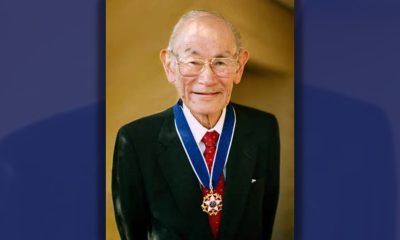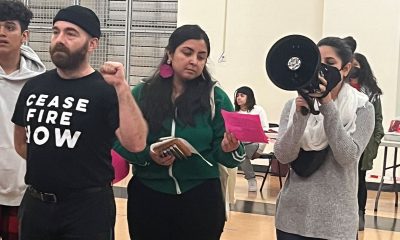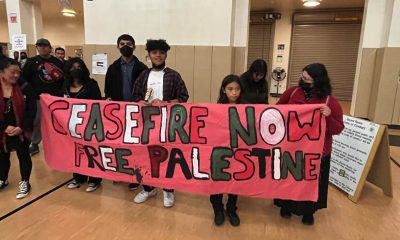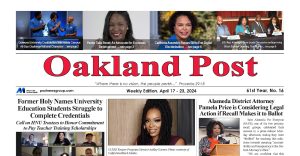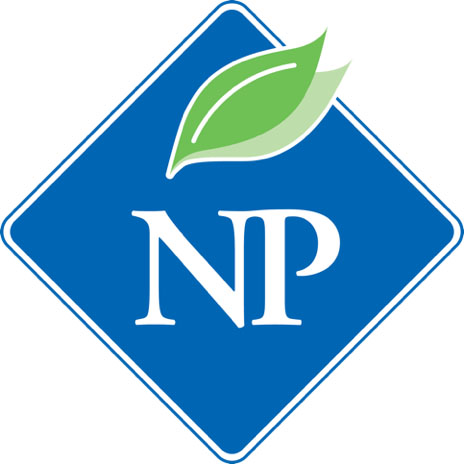COVID-19
New Board Members Seek Increased Community Influence in School District Decisions
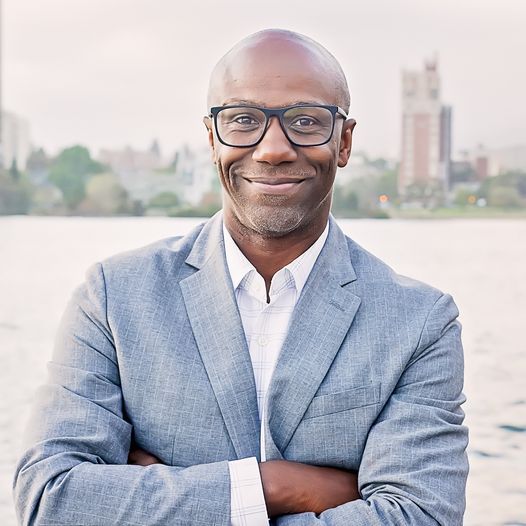
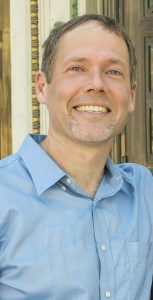
District 1 OUSD Trustee Sam Davis.
There are high hopes in the community for a newly energized school board as four new members set to take office in January pledging to disentangle the multiple crises facing the Oakland Unified School District (OUSD), including shuttered classrooms and COVID-19 enforced distance learning, ongoing threats of austerity-driven budget cuts and state-enforced demands to close more neighborhood schools.
This week, the Oakland Post interviews two new board members, Sam Davis and VanCedric Williams. Last week, the Post published interviews with Mike Hutchinson (D-5) and Clifford Thompson (D-7).
Davis, who represents District 1, worked as a teacher and family outreach coordinator in Oakland schools for 10 years. Originally from Queens, New York, he has lived in Oakland since 2001. He has a son in the 9th grade at Oakland Technical High School.
Looking at hopes for recovery this year from the impact of the pandemic, he says he is aware of the huge controversy surrounding the reopening schools. “Now, we’re going to have a vaccine, (ands) kids are dying for some interaction.” (Yet) a lot of families have serious concerns (about safety) …(while) some people want to open schools immediately.”
Once the schools are reopened, he said, one of the biggest questions will be whether “there is going to be money for summer schools for the kids who have the most need,” Davis said.
He sees mixed indicators on the district’s financial condition. “The good news is that we have much stronger financial management within the district (now),” he said. Because of the pandemic there are a lot of state and federal emergency funds coming into the district, but at the same time there is a high risk of recession in the coming year.
Though there is a high level of mistrust in the community of district leadership, residents continue to strongly embrace the public schools and in November passed Measure Y, a school bond measure to repair and renovate schools across Oakland. Among other projects, the bond will improve school ventilation systems — needed to protect teachers and children from COVID in tight spaces — and also to protect air quality during fire season. The funding will also help the district move out of its downtown Oakland offices, which at present costs several millions of dollars a year to lease.
To come to grips with the looming challenges, the district needs to improve its approach to interacting with the public, he said. “OUSD has a history of “last-minute public engagements,” organized as “afterthoughts,” creating the impression that community engagement is being done in a “perfunctory way.”
Davis says his first step as a board member will be create an advisory group of family and teachers and school site staff “that will help me stay rooted in their concerns.”
“As a board member, you hear a lot from senior leaders,” he said. He says the advisory group will provide “balance,” which will “help me keep my feet on the ground.”
Williams, who represents District 3, has lived in Oakland for 12 years. He has been an educator for 17 years, teaching high school social studies including ethnic studies and honors U.S. history. He currently is treasurer of the San Francisco teachers’ union, on release as a union representative. He has lived in San Diego and was born in West Covina in Southern California.
Williams says his immediate goals are to start conversations with parents and students in District 3 schools and has already met with Black students. “I’m reaching out to each of the District 3 school sites,” he said. “It is very important to market and showcase the schools and the District 3 neighborhoods, to build trust and engage the community.”
A top priority is to strengthen the feeder-school system, which functioned in the past but has decayed, so neighborhood elementary schools again will lead students to neighborhood middle schools and from there to neighborhood high schools.
“I’m a big proponent of neighborhood schools, sustainable community schools,” he said. “Kids in a neighborhood will go to a (nearby) school, building the feeder system. The school choice system has not been helpful to neighborhood schools. We have to move to sustain District 3 enrollment, to keep more students in District 3.”
Williams will hold a town hall meeting in January, to talk to the community “about their perspectives, what they’d like to see,” and to answer the question, “What is it going to take to make the schools competitive?”
Getting the schools reopened will require labor negotiations, he said. “Labor is asking for protection for their members: testing, contact tracing, a formula for what happens if a student comes in and is found to have COVID. There are lots of parts that have to be negotiated.”
The district has to be willing “to engage its labor partners with honest dialogue,” he said, “It’s a work in progress but it’s going slowly.”
One of the challenges the district faces is that Alameda County is “giving directives” on the pandemic and other basic decisions, cutting out the teachers and the local community.
“Overseeing the direction of the budget and overseeing the district, the county is going forth to give directives without providing OUSD with additional funds, the necessary resources to get it done,” he said.
“The district is squeezed between parents and Alameda County telling them what to do,” he said. But these are decisions that should be made, he said, with participation of parents and teachers.
Alameda County
Alameda County Supervisor Nate Miley Gives Small Business a $30,000 Boost
On Jan. 6, Alameda County Supervisor Nate Miley (D6) presented a $30,000 check to small business owner William “Bill” Owens, owner of Cascos Martial Arts Studio at 74th and MacArthur in Oakland. Miley, whose business has been facing financial challenges due to COVID Pandemic restrictions, says he was nearing bankruptcy. “This check will go a long way and is greatly appreciated,” he said.
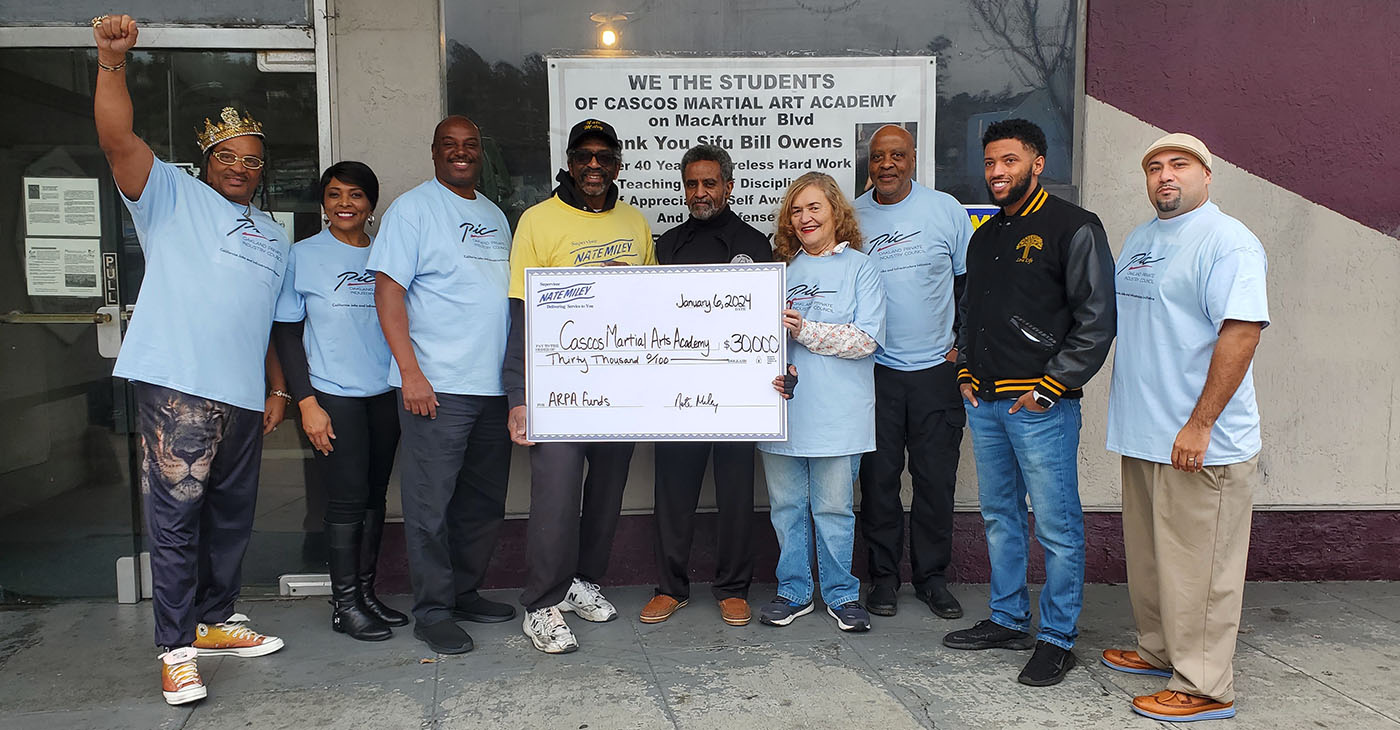
By Carla Thomas
On Jan. 6, Alameda County Supervisor Nate Miley (D6) presented a $30,000 check to small business owner William “Bill” Owens, owner of Cascos Martial Arts Studio at 74th and MacArthur in Oakland.
Miley, whose business has been facing financial challenges due to COVID Pandemic restrictions, says he was nearing bankruptcy. “This check will go a long way and is greatly appreciated,” he said.
For Miley, starting 2024 on a high note was important. “I can’t think of a better way to start the new year,” he said. “Small businesses are vital to our communities and when you help a committed business owner, you help a community. It’s an honor to add value by contributing to a small business that has trained so many young people, watched them grow up and have viable careers.”
OPIC Business Outreach Team Members Diane Lewis and Frank Smith celebrated the new collaboration with the martial arts studio.
“It’s always exciting to launch new programs,” said Lewis. “It’s encouraging to see Black men supporting one another and helping them rise to another level,” said Smith.
The check was presented to Owens along with the Oakland Private Equity Council (OPIC).
Pastor Raymond Lankford of the Oakland Community Church and president of the (OPIC) was also present.
“This is martial arts studio has been a big part of this community and helping support Mr. Owens is a win-win for the community,” said Lankford.
OPIC Board Member Kitty Epstein also praised Owens.
“It’s important to support this business and its contribution to the community,” said Epstein.
Cascos Martial Arts Studio has been in business for more than 50 years. Owens and his wife Mary have taught the community the art of self-defense together. “When COVID happened, we were hit with social distancing regulations in our small space,” explained Owens. “We went from having a couple hundred students to a few.”
After the check presentation, Owens invited attendees to see his training in action. For him, teaching the art of self-defense has included naming his moves and techniques after cultural icons like Martin Luther King, Jr. and other activists.
Owens says he bridged the innate rhythms and movements of African American culture with the techniques of Asian martial arts. However, upon traveling the world, Owens noticed many of the moves were less fluid.
“Often the moves are more frigid, and our influence has added more fluid movements,” said Owens as he moved, mimicking some boxing movements and fancy footwork.
“We want to ensure Owens is in business for years to come,” said Pastor Raymond Lankford, president of the Oakland Private Industry Council.
Owens also demonstrated how women and the elderly can protect themselves from theft, injury, or even being trafficked. 2022 statistics noted that of the 1500 people reported missing, over half were African American.
“We have to teach our young people these techniques. We can all support small businesses and expand services throughout the community,” added Owens who plans to add a mobile service to his business.
Activism
Business Owners Talk Future of Economic Development in Oakland at Downtown Event
The city of Oakland is taking steps to streamline permits for businesses to entice them to stay and bring new projects to the city. Additionally, the city is committing $200 million for affordable housing, which is “unprecedented in the city of Oakland” says Councilmember Nikki Fortunato-Bas, who was also at the event. “We have committed to supporting our community, supporting our local businesses and really showing that we can work together for safer communities,” Fortunato-Bas emphasized in an interview with the Post.
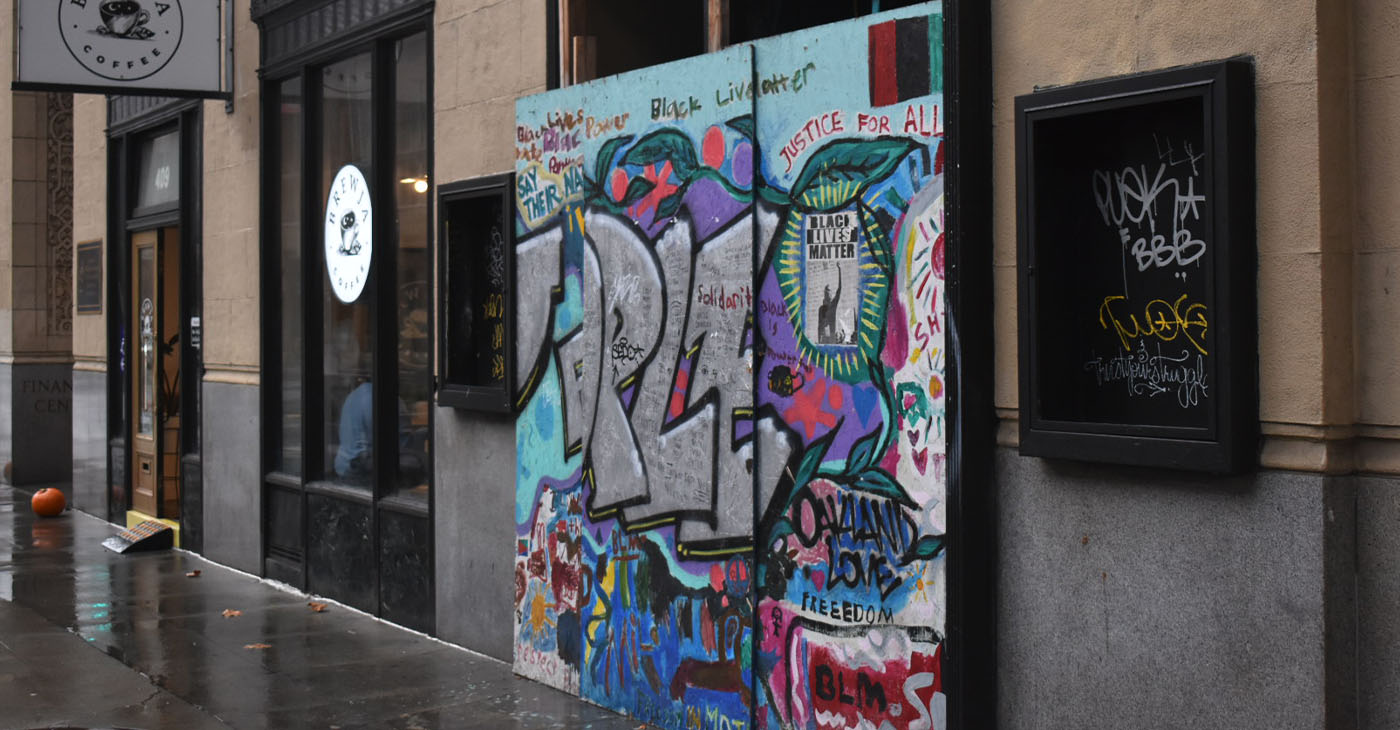
By Magaly Muñoz, Post Staff
Developers and business owners in the Bay Area came together for the “Oakland Structures” event hosted by San Francisco Business Times to discuss economic development projects in Oakland last Thursday.
Mayor Sheng Thao opened up the event as the keynote speaker, sharing her experiences from her first year in office and the measures her administration has taken to address the key issues plaguing the city.
Thao inherited the largest deficit Oakland has ever seen- $360 million- and came into her position as the effects of the COVID-19 pandemic were hitting the city hard. The once bustling city has faced difficulties as people transitioned to hybrid or work-from-home jobs, which has caused foot traffic to slow down and businesses to lose clientele.
“I refuse to stop until we get our businesses back up and running at full capacity, and make sure that people feel safe, not just safe in the commercial corridors, but safe everywhere,” Thao said.
Thao shared that the economic development in Oakland is slowly, but surely, growing as new companies bring their business to downtown. PG&E has recently been among the bigger corporations that’s settled in Oakland, bringing 7,000 jobs with them, which will not only open up potential opportunities for Oaklanders, but also increase foot traffic for businesses in town.
Thao acknowledged several initiatives that have already been implemented to give the city a boost, including Five After Five, a cost-effective parking program; Activate Oakland grants, which gives businesses up to $15,000 to host events that will bring the community to downtown; and the film initiative to encourage filmmakers and TV shows to shoot their projects in Oakland.
The city of Oakland is taking steps to streamline permits for businesses to entice them to stay and bring new projects to the city. Additionally, the city is committing $200 million for affordable housing, which is “unprecedented in the city of Oakland” says Councilmember Nikki Fortunato-Bas, who was also at the event.
“We have committed to supporting our community, supporting our local businesses and really showing that we can work together for safer communities,” Fortunato-Bas emphasized in an interview with the Post.
As the holiday season approaches, Fortunato-Bas urges the community to shop and dine locally, all the way from the Fruitvale to Grand Lake, areas she represents, as this will help boost and support these businesses.
During a panel with investors and business owners who have new projects breaking ground as early as 2024, a pressing question emerged among the attendees and panelists was “Is Oakland the right city to maintain and bring in businesses?”
Real estate developer Riaz Taplin, CEO and founder of Riaz Capital, said that people need to want to come back to the office and revitalize the commercial corridors of the city, but also that businesses need the support of the government sector to thrive.
He feels as though new entrepreneurs who are starting out in Oakland today do not have the advantage that many, like himself, did pre-COVID, where they could just walk into a city office and be helped on how to get the right permits because everything and everyone was so accessible.
More people would feel enticed to come back downtown if they felt that they were safe, so public safety needs to be high on the list of priorities for the city, Taplin said, emphasizing issues such as litter, vandalized business fronts and homeless encampments.
“Something needs to happen to make Broadway a place people want to go,” Taplin said after sharing a story about downtown Alameda being the busiest area with the most foot traffic out of Oakland and San Francisco.
Another panelist, Oakland Roots president Lindsay Barenz, shared that although Oakland is struggling to keep sports teams, the time is now to invest in those projects to keep the sports culture in the city.
“A sports team can be a critical component to that [a place where people enjoy living],” Barenz said.
She emphasized that the Oakland Roots see themselves as significant to the culture of Oakland as institutions like the zoo, museum, and Fairyland. She believes that the morale boost that a sports team can provide is what Oakland needs.
When asked to give a headline of what is to come in Oakland in the next five to 20 years, Taplin said, “Clean it and they will come.”
California Black Media
Gov. Newsom and Gov. DeSantis Go Head-to-Head in Nationally Televised Debate
Conservative Fox News personality Sean Hannity moderated the duel, during which the TV pundit, more than once, injected his opinion, and appeared to be providing subtle assists to DeSantis. As the debate progressed, it was clear that opinions about each topic discussed was representative of the philosophical and political chasm that divides liberal and conservative America, and a preview of campaign mudslinging that is bound to intensify as the 2024 presidential campaign ensues.

By California Black Media
In an intense, 95-minute-plus televised faceoff between California Gov. Gavin Newsom and Florida Gov. Ron DeSantis on Nov. 30, the men traded jabs and putdowns, defended their respective gubernatorial records, disagreed sharply on how to solve the country’s most pressing problems, and expressed clashing views on the performance of the Biden-Harris administration.
Conservative Fox News personality Sean Hannity moderated the duel, during which the TV pundit, more than once, injected his opinion, and appeared to be providing subtle assists to DeSantis.
As the debate progressed, it was clear that opinions about each topic discussed was representative of the philosophical and political chasm that divides liberal and conservative America, and a preview of campaign mudslinging that is bound to intensify as the 2024 presidential campaign ensues.
“I’ll tell you why I’m here,” Newsom said. “I’m here to tell the truth about the Biden-Harris record and also compare and contrast Ron DeSantis’ record and the Republican Party’s record” with that of California.
DeSantis blasted Newsom’s management of the COVID-19 crisis and criticized Newsom for prevalent crime, homelessness and deteriorating social conditions in California cities.
“You have the freedom to defecate in public in California,” DeSantis said. “You have the freedom to pitch a tent on Sunset Boulevard. You have the freedom to create a homeless encampment under a freeway and even light it on fire. They’re not the freedoms our founding fathers envisioned.”
Newsom took a jab at DeSantis’ presidential candidacy, predicting that the Florida Governor would be endorsing GOP frontrunner Donald Trump soon.
“There’s one thing we have in common,” Newsom said. “Neither of us will be the nominee for our party in 2024.
-
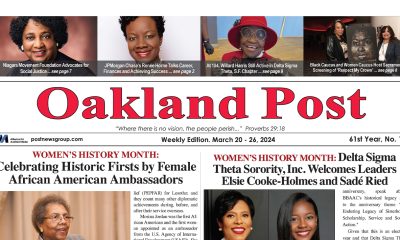
 Activism4 weeks ago
Activism4 weeks agoOakland Post: Week of March 20 – 26, 2024
-

 #NNPA BlackPress3 weeks ago
#NNPA BlackPress3 weeks agoCOMMENTARY: D.C. Crime Bill Fails to Address Root Causes of Violence and Incarceration
-

 #NNPA BlackPress3 weeks ago
#NNPA BlackPress3 weeks agoMayor, City Council President React to May 31 Closing of Birmingham-Southern College
-

 #NNPA BlackPress4 weeks ago
#NNPA BlackPress4 weeks agoCOMMENTARY: Lady Day and The Lights!
-

 #NNPA BlackPress3 weeks ago
#NNPA BlackPress3 weeks agoFrom Raids to Revelations: The Dark Turn in Sean ‘Diddy’ Combs’ Saga
-

 #NNPA BlackPress4 weeks ago
#NNPA BlackPress4 weeks agoBaltimore Key Bridge Catastrophe: A City’s Heartbreak and a Nation’s Alarm
-
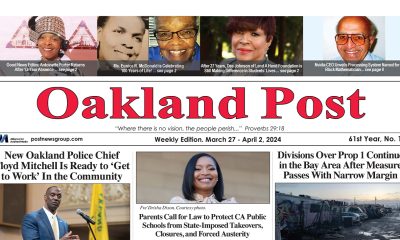
 Activism3 weeks ago
Activism3 weeks agoOakland Post: Week of March 27 – April 2, 2024
-

 #NNPA BlackPress3 weeks ago
#NNPA BlackPress3 weeks agoBaltimore’s Key Bridge Struck by Ship, Collapses into Water

